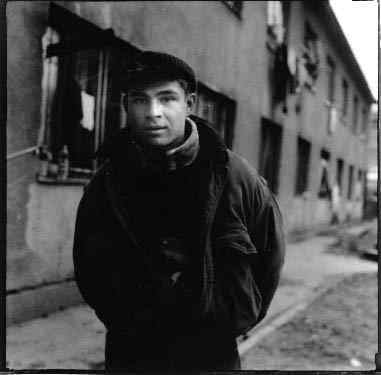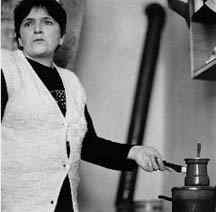




 |
 |
 |
 |
 |
|
| Contents Forward Backwards |
|
It took a pack of Marlboros and a Polaroid camera to get this teenager to warm up to us. He lived in a former student dormitory of the Sarajevo University where 700 refugees, including over 300 children, lived. This was Sarajevo's largest collective center. Nadja Buvic, a refugee herself, directed the center. Despite her unyielding energy and determination, it was a dismal place. Men shaved in the toilet. There was no place to bathe. During the war, several young boys were killed by shells that hit the corridors. Sometimes over 300 people crowded into a basement shelter for 24-hour periods at a time. Behta (below) and her husband, Salim, have two children, ages 10 and 14. Originally from Foca, they were living in Sarajevo near the front lines when the war began. Behta's two brothers were killed during the war. They were soldiers in the Bosnian army. Salim has been epileptic since the war started. He cannot work and the medication he needs is scarce. "My hope is to die where I was born -- near Gorazde. Even though it is burned, it was my home," he said. "Our friends abandoned us in Sarajevo. They were Serbs and they left before the war without telling us that this would happen. All Serbs are not the same -- not all bad -- but our friends now live in Pale in Muslim houses. We have no contact with them. God help that war never begins again." At the end of May 1996, all of the refugees had to leave the center because the university wanted to reclaim the building as a dormitory. The last we heard, they were encouraged to move into the homes of Serbs who left Sarajevo in the spring of 1996. |
  |